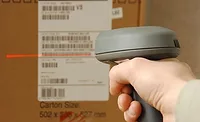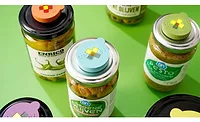Food Packaging
Increasing use in intelligent packing of fruits and vegetables to drive PBAT market

Photo courtesy of Getty Images/realstockvector
The global PBAT (polybutylene adipate terephthalate) market is expected to grow at a CAGR of 8.7% during the forecast period 2021 to 2031 with an end value of $2 billion, according to a report by Transparent Market Research. Fruit and vegetable intelligent packaging using PBAT-based biodegradable mulch films is used to reduce food waste. The films provide increased oxygen and water vapor transfer rates in fruit and vegetable bags.
PBAT is a strong, ductile material that can be manufactured using standard film extrusion procedures. This aids in the production of films having LDPE (low density polyethylene)-like mechanical characteristics. Compared with its homopolymers, however, PBAT is relatively rigid. As a result, adding PBAT to polymer blends, including brittle polymers, can help enhance toughness without compromising biodegradability.
Producers of PBAT are creating biodegradable stand-up pouches, which are used for the packaging of nuts and more. PLA, PBAT and cornstarch are used in the pouches to make them biodegradable. Moisture-proof and biodegradable stand-up pouches for food packaging are becoming more widely available, likely due to consumers’ need for packaging that doesn’t hurt the environment.
Antimicrobial packaging techniques extend the shelf life of food products by limiting the growth of microbes. Companies are increasing their output capacity in this domain as well. The demand for antimicrobial PBAT films with various quantities of chitosan nanofibers has risen as a result. Aliphatic polyester films are brittle; however, this may be solved by combining PLA with other bio-based polymers such as PBAT. And, PLA/PBAT/TPS/nanocrystalline cellulose (NCC) nanocomposites with superior mechanical and barrier properties can be also used in food packaging.
The use of PBAT in the making of garbage and shopping bags is increasing too. The bag-making business has been evolving and growing at a rapid pace globally.
Looking for a reprint of this article?
From high-res PDFs to custom plaques, order your copy today!









